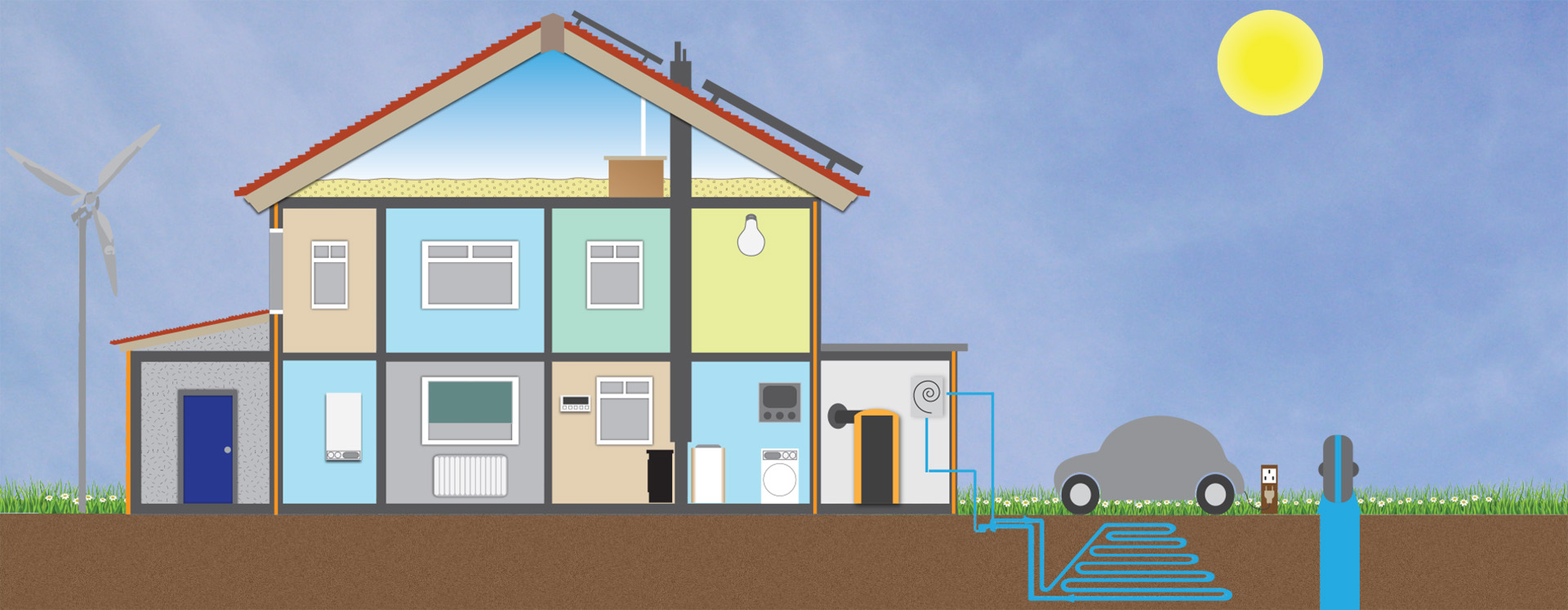How does solar thermal work?
Solar thermal panels (not to be confused with solar PV panels) use energy from the sun to heat water in the plumbing system for use in heating or hot water. The cost of installing a typical solar water heating system starts at around £4,800. The system could provide most of your hot water in the summer, but much less during colder weather. Whilst savings on your energy bills might be modest you may be able to receive payments for the heat you generate from a solar water heating system through the government’s Renewable Heat Incentive.
There are two types of solar thermal panel:
- Evacuated tubes are glass tubes that contain no air and have a metal conductor in the centre of them. They are very efficient as the glass allows solar radiation in and then keeps most of it inside. The metal conductor in the tube gets very hot and transfers heat into a heat exchanger at the tops of the tubes where water gets circulated into the house. Evacuated tubes are the most expensive form of solar hot water (SHW) heater due to their intricate design.
- Flat panel collectors are effectively a tray with a glass sheet top, insulation on the back and water pipes running though the middle where the temperature gets very high. They are cheaper than evacuated tube collectors and can be less efficient as heat can ‘leak’ more easily from them because they contain air.
What are the planning rules?
Domestic installations (less than 9m2), whether on a house or in a garden, are classed as permitted developments so do not need planning permission. However, restrictions do apply, such as in conservation areas or on listed buildings. Installations on non-domestic buildings are subject to different planning restrictions and considered on a case-by-case basis.
Limitations
The main limitation is sunlight. Although solar thermal panels aren’t as sensitive to diffuse or semi shadowed areas as solar photovoltaic panels are, they still need to be in a sunny location to work efficiently.
More hot water than needed could be produced in the summer but insufficient may be produced in the winter due to increased heating demand in the winter and less solar radiation. Therefore a back-up heating system will still be needed.
Some current plumbing systems, such as those that don’t have a hot water storage tank, won’t be suitable for solar thermal panels or an expensive redesign might be needed to accommodate solar hot water.
Summary
- Solar thermal panels use sunlight to heat water, either for domestic hot water or a household heating system.
- There are two sorts of solar thermal systems – evacuated tube (better but more expensive) or flat bed collector (cheaper but not quite so efficient).
- They can only collect heat during daylight hours, so in winter with less daylight and greater heating demands you will probably need to supplement them with some other form of heating.
- They attract payments from the Renewable Heat Incentive (RHI) which, in most cases, will amount to between £1500 and £2000 spread over 7 years
- You do not need planning permission for solar thermal panels on your house or in your garden, but special rules apply if you live in a conservation area or listed building.
- You might need to rethink your plumbing system!

